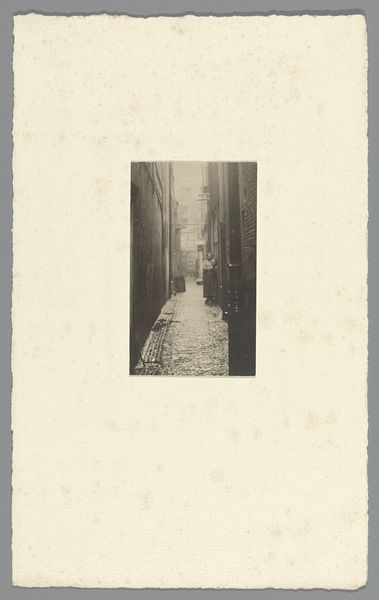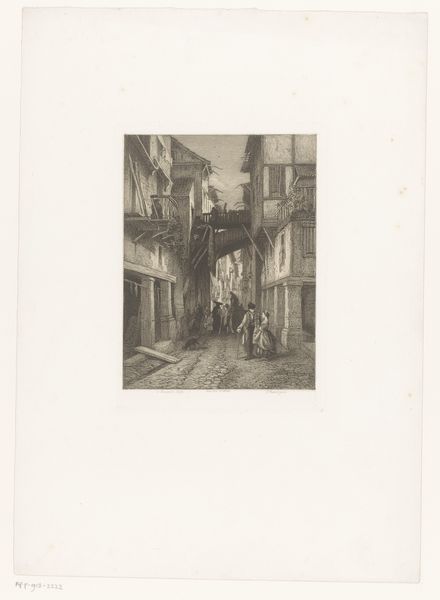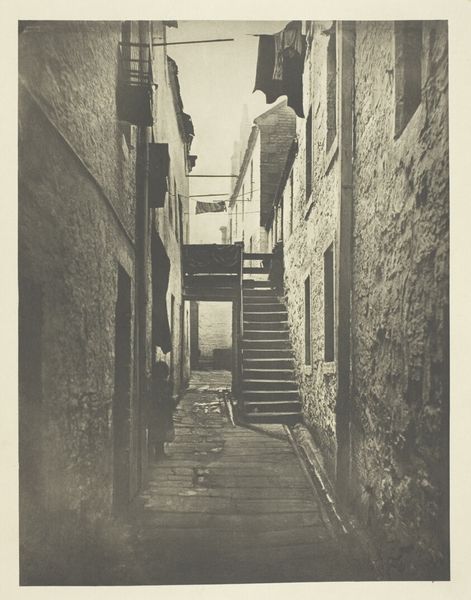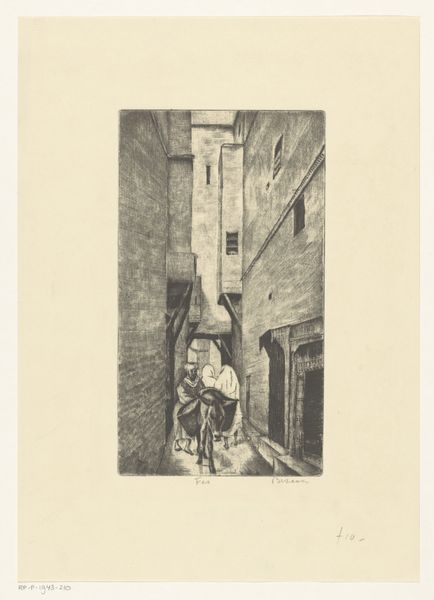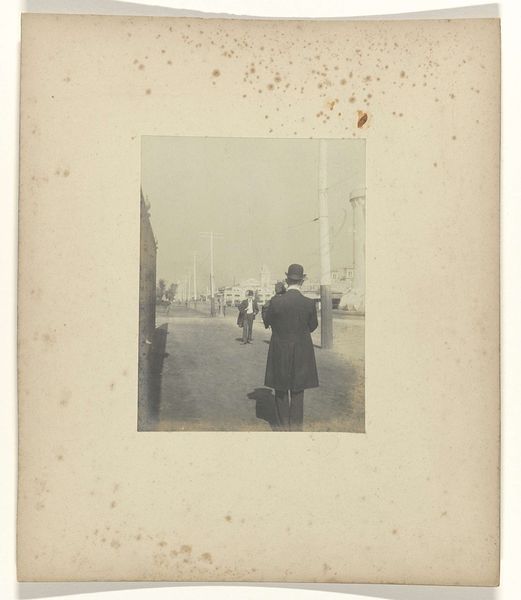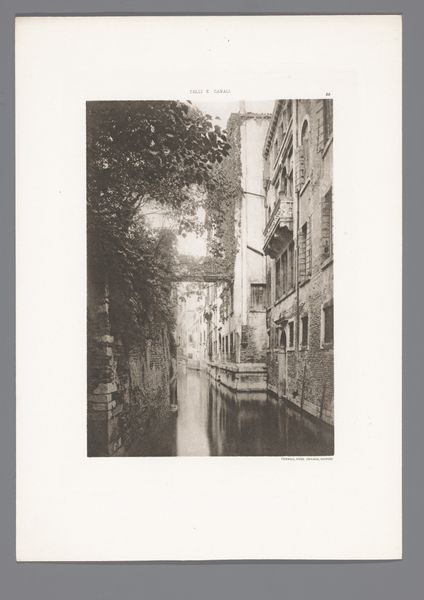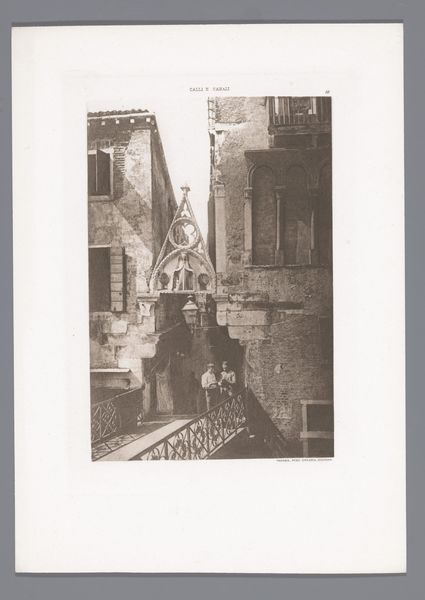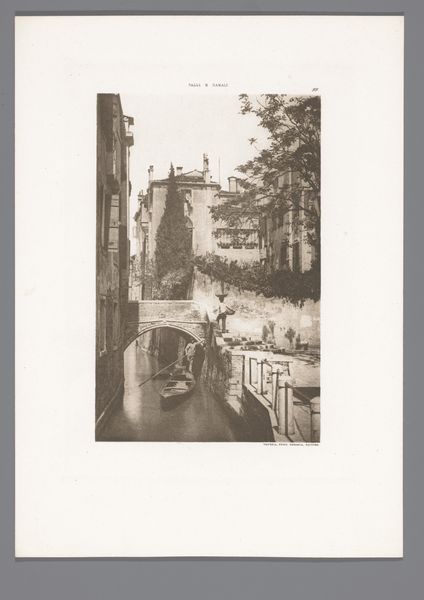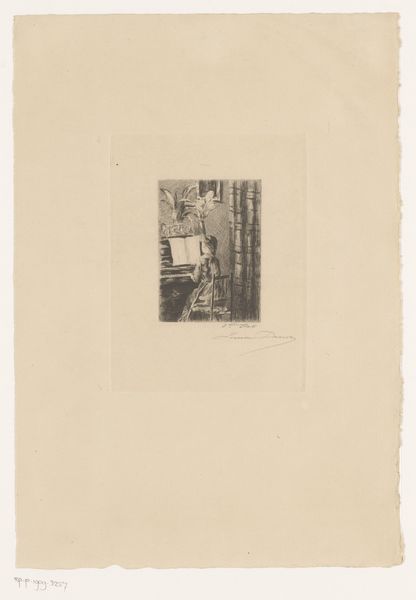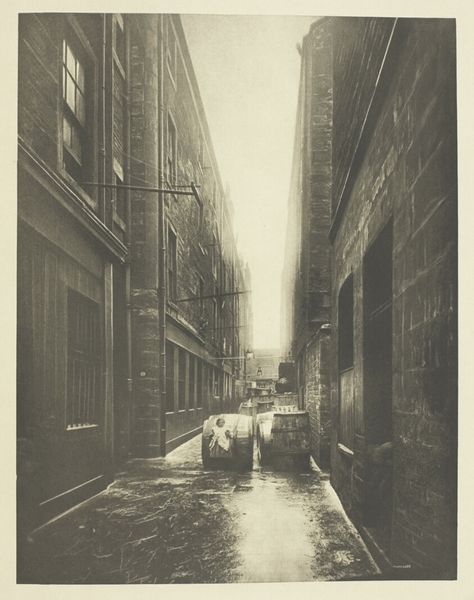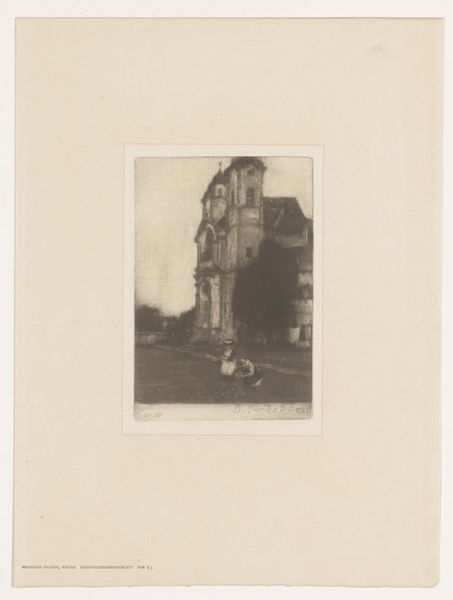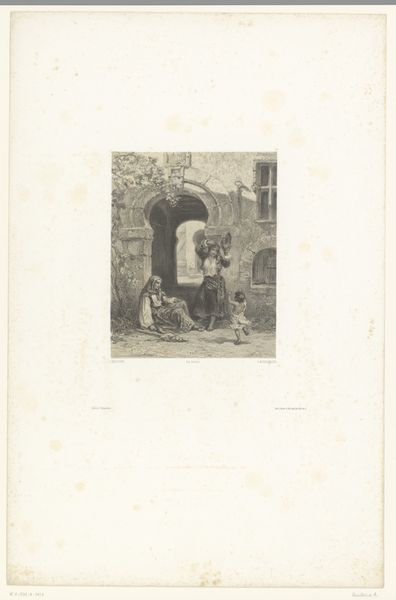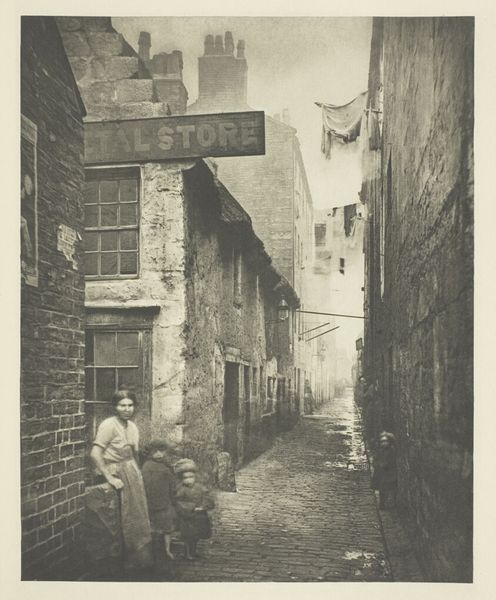
Dimensions: height 358 mm, width 272 mm, height 487 mm, width 405 mm
Copyright: Rijks Museum: Open Domain
Curator: This photograph by George Hendrik Breitner, taken around 1905, captures a view of the Baanbrugsteeg in Amsterdam. What’s your first impression of it? Editor: It feels incredibly intimate, like a secret peek into another time. It's somber and beautiful; the soft greyscale palette almost romanticizes the mundane. You can practically feel the wet cobblestones beneath your feet. Curator: Indeed. Breitner, often associated with Dutch Impressionism, really aimed to capture the energy of the city in its most unvarnished form. He wasn’t afraid to depict Amsterdam as it was, grit and all. This image isn’t a picturesque postcard. It reflects daily life. It challenges that romanticization you mentioned by showing a stark, somewhat gloomy, reality of Amsterdam's working-class areas. Editor: Absolutely. Look at the way he uses light – or, more accurately, the lack of it – to create a sense of enclosure and anonymity. The figures are blurred, almost ghosts in the urban landscape, swallowed by the architecture around them. It speaks to the invisibility of marginalized populations even within bustling cityscapes. The steep angle of the street adds to that feeling, making the architecture almost suffocating, weighing down the figures that are on the road below. Curator: Breitner, also known as the 'painter of Amsterdam', extensively documented city life using photography as studies for his paintings. He saw the camera as a tool, a visual notepad, allowing him to freeze a moment, a specific atmosphere he could then translate onto canvas later. Do you feel that using photographs brings his paintings something different to those that would normally fall under the umbrella of impressionism? Editor: Certainly, the photographic element lends a raw authenticity and immediacy you might not always find in purely painted impressionistic works. This image functions as more than just art, becoming a document of social and architectural history. But more importantly, by focusing on such candid snapshots of everyday life, Breitner allows us to meditate on the urban experience, the experience of seeing and being seen – or rather, unnoticed – within the anonymity of a burgeoning metropolis. Curator: It offers a strangely timeless vision, even a century later. These individuals, shrouded by the mists and anonymity of the alley, become representative of anyone simply going through their daily life in Amsterdam's winding alleyways. Editor: Absolutely. Thank you.
Comments
No comments
Be the first to comment and join the conversation on the ultimate creative platform.
